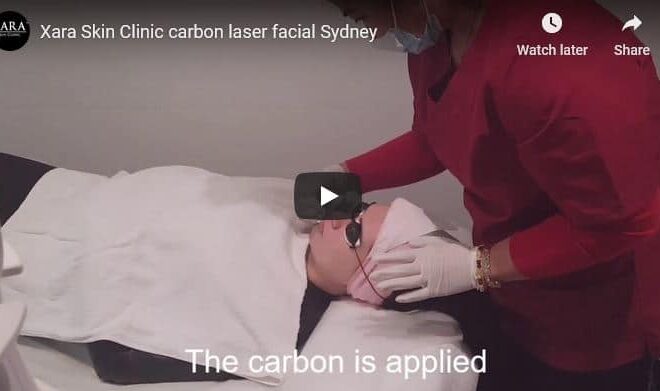Cost-effective strategies to decrease the carbon footprint in your clinic
Cost-effective strategies to decrease the carbon footprint in your clinic
The Carbon Footprint of the Health Care Industry
As more industries shift towards becoming carbon neutral, it is jarring to discover just how much greenhouse gasses are generated by even the simplest tasks in day-to-day operations. Facilities still running on coal energy, inefficient logistics, and even the kind of lightbulb installed in the office all contribute to a company’s carbon footprint.
In a paper published by Health Care Without Harm in 2019, the health care industry was responsible for 1.6 gigatons of carbon emissions, making up 4.4% of the total carbon emissions worldwide. For perspective, Japan was recorded to have emitted 1.061 GtCO2 in 2020 while the United States released 4.535 GtCO2. Acknowledging the impact the industry has on global warming, larger health care institutions have already made considerable changes in their systems to decrease carbon footprint, with small- and medium-sized hospitals and clinics following suit.
How to Decrease Your Clinic’s Carbon Footprint in a Cost-effective Manner
Switch your light bulbs
One of the first things to look into when beginning your journey to reducing your carbon footprint is your consumption of electricity. Lighting in a clinic is essential and it probably holds a chunk of the electric bill. The simple modification of your light bulbs is an effective way to reduce your electricity consumption.
If you still have incandescent or fluorescent light bulbs in your clinic, switch to LED bulbs. Not only are they free from any hazardous waste but they are significantly more energy-efficient and last longer than traditional light bulbs. Some LED companies also offer new technology like light adjustment to dim or completely turn off the bulbs depending on the natural light present in a room or if the room is empty. It is also possible for the bulbs to be programmed to turn off at specific hours of the day.
Energy-efficient appliances
Look into upgrading to energy-efficient appliances, especially if these machines are used regularly like computers and external power adaptors. Assess the appliances in your clinic and see if any old or energy-inefficient units could be replaced with newer ones that have better technology and less energy consumption.
Replacing or purchasing these appliances may be a bit of an investment upfront but they will save you money in the long run. Don’t forget to send the old appliances to the recycling to ensure it does not end up in a landfill. You can also purchase from companies that are actively reducing their carbon footprint for some extra carbon-neutral points.
Mind the standby power
Don’t be fooled by your computer on “sleep” mode, it is still using up electricity. Standby power is the electrical energy consumed by equipment still plugged into an electrical source while they are on standby mode or switched off.
Some machines like telephones, answering machines need to be on standby power because they could be used anytime during the day and can be considered necessary standby power. However, some equipment, especially if they are older and energy-inefficient, need not be connected to power the whole day and can be unplugged when they are not in use. You can also consider using timer switches that can turn appliances on and off based on the programmed time.
The thermostat of your clinic can also be set at 23 °C (74°F) in the summer months and 20 °C (68°F) in the winter months, as endorsed by the American Medical Association. This not only helps keep your clinic comfortable for your patients but also conserves energy. Make sure the heating and cooling system is also properly maintained to keep it in good, energy-efficient shape.
Conserve Water
With hygiene being an important aspect of a clinic, a lot of water can be used to keep everything and everyone clean and germ-free. However, just like the electric energy consumed, your water usage can impact your carbon footprint.
Have everyone in the clinic be mindful of the running tap when washing their hands and check your plumbing for any leaks. If it is possible, install water-saving features like water-efficient faucets and faucet attachments. And if you happened to be buying a new toilet, opt for the water-saving models.
Also, assess your clinic’s consumption of hot water. Work with cold water whenever possible. Hot water requires energy to heat up and depending on how far the distance of the faucet is from the water heating source, you’re also letting the water run unused thereby wasting it.
Purchasing green and recycling
Purchasing green is a more conscious effort but it can easily be done. Start with something as easy as buying toilet paper and paper towels that were manufactured with low carbon emissions. Using printing paper made from 100% recycled paper in the office is also a great way to support greener manufacturing processes.
You can also opt out of unnecessary packaging whenever possible, and for complex wastes like styrofoam from clinical supplies that might be hanging around, try recycling styrofoam. Always have an organized recycling bin for proper solid waste management for any packaging that cannot be avoided.
Regulated Medical Waste
According to the International Journal of Women's Dermatology, the disposal of regulated medical waste (RMW) is 50 to 10 times more expensive than processing non-regulated waste. When disposing of RMW, make sure to have a designated bin strictly for that purpose and avoid throwing regular trash in that bin. That way, only the RMW is processed, reducing the increased carbon footprint of the system.
Reducing your carbon footprint does not need to be a dramatic change to how you do your day-to-day operations. They can be small changes and habits that your clinic can easily practice that will not only help you reduce your carbon footprint, but also help save you money in the long run.
Looking for world-class beauty services? Visit XARA Skin Clinic, a one-stop shop when it comes to beauty and skincare. View our range of services that goes from detoxing to anti-aging, fat freezing, non-surgical fat removal to removing hair.
Will it be easy to get parking?

Yes, we have 500 spaces just across the street from us, look for The Canopy.
Related Posts
 Australian Newsagency Blog
Australian Newsagency Blog
- The local Aussie newsagency is thriving and not as you might remember it August 26, 2025
- The mistake of using a visual merchandiser to create displays in your retail newsagency August 25, 2025
- Your local newsagent is the best place to buy Father’s Day cards this year and here’s why August 23, 2025
- How can I reduce the rent I pay for my local shop? Advice for small business retailers August 20, 2025
- Digital plays a key role in performance of The Lottery Corporation August 20, 2025
 Crikey
Crikey
- How Crikey will report on the teen social media ban (and how we got here in the first place) August 26, 2025
- The role of the absurd in Trumpland August 25, 2025
- On Notice: Climate fight brewing, Midwinter Ball looms and Pocock to host cricket great — parliament’s back! August 25, 2025
- The Liberals used to be the party for women — then John Howard came along August 25, 2025
- The key figures underpinning the NDIS and its generational reform project August 25, 2025




